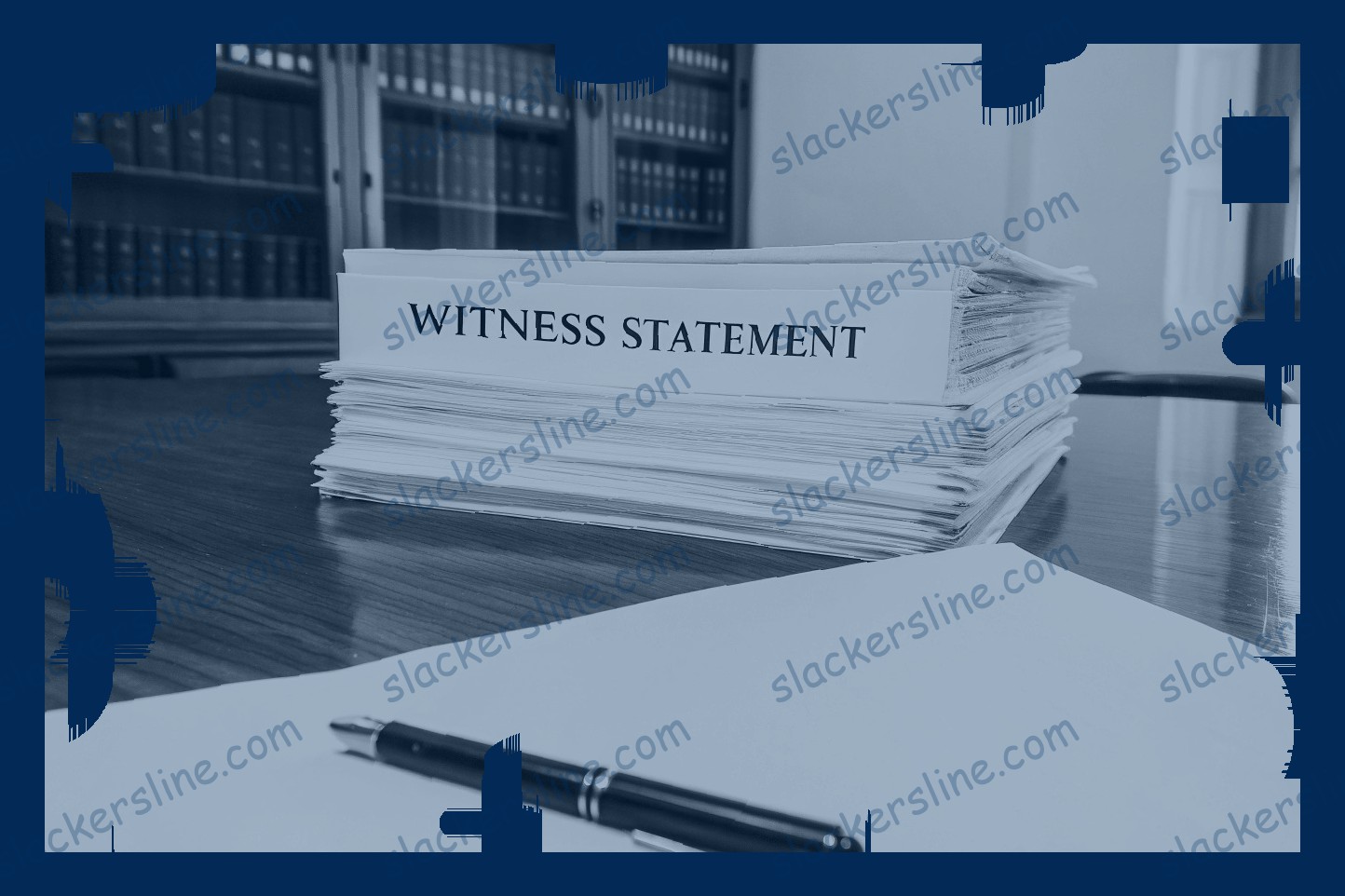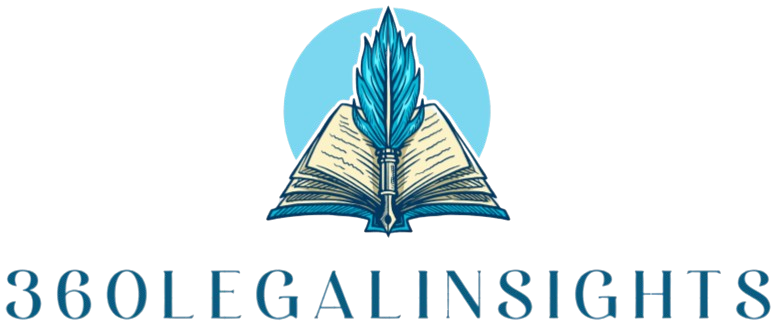What is a Witness Statement?
Witness statements can be part of a legal defence in civil and criminal matters, and are also common in inquests or inquiries, and most tribunals. The manner in which they form part of the evidence may differ depending on the context, but all statements have something in common: they provide the truth of what has been witnessed. Witness statements, therefore, can be invaluable in supporting a case for damages, or even proving one’s innocence.
A witness statement is a written report of events witnessed by a person; it is a factual, not a subjective account of an incident. Such documents are commonly drafted by solicitors, but can also be produced through an individual’s representative – for example a social worker or a family member. In certain circumstances, the Court allows a witness statement to be written by a lay person, i.e. someone with no connection to the legal proceedings other than the information they possess.
Regardless of who produces the statement, this document will ultimately be signed by the individual (‘the witness’). When signing, they will confirm the information provided is true, and agree to their statement being used in legal proceedings.
As with other legal documentation, witness statements are expected to follow a certain format, and contain specific information . Failure to do so may make the document inadmissible.
Witness statements can be prepared on an ‘informal basis’, whereby the information is drafted prior to receiving close advice from a lawyer. A statement drafted at this stage may be provided to a solicitor for review and advice on how to take the matter forward. The writer of the statement will then decide whether or not they are prepared to sign the document as the final version. It is not uncommon for a witness statement to be produced in this way, whether to provide an overview of the case for seeing legal advice, or because the individual writing the statement will be meeting their solicitor for the first time.
In some cases, a witness statement will need to be prepared in a formal manner, for example if it is being filed into Court proceedings. This is not the same as formal witness statements prepared for the sake of a trial, i.e. generally produced at a later stage. Where witness statements have been prepared prior to proceedings starting, for the first time they can be used as evidence, a witness will be asked to sign their statement for the first time. Presenting the witness statement in Court will usually entail swearing an oath on the Bible or another holy book, or affirming the truth of the witness statement, i.e. verbal confirmation that it is accurate.

Why Witness Statements Matter
Witness Statements tend to be a large part of court cases or legal proceedings. Such statements will generally look for the following information;
• The name and address of the witness
• A statement of the matters of fact about which the witness will give evidence and the grounds for the witness’s belief in them
• A statement of facts, allegations, or contentions to which the witness will not give evidence and the grounds for the witness’s belief in them
A witness statement is in effect evidence for that witness and it can mean the difference between winning or losing a case, depending upon the strength of the witness statement and how it is presented to the court.
This type of statement can save a lot of time for the court as the opinions given by the witness have already been included in the document. Witness statements are usually produced in chronological order, as a way of explaining the evidence given.
Witness statements can often be used if both parties are in agreement with the facts of the case, helping the court to establish what should be discussed at court, and ultimately help to prevent further delays and costs to the court and the parties.
What is in a Witness Statement?
Witness statements generally consist of relatively standard components which will likely be found in any statement regardless of the facts being reported. The first part of the statement will always provide the full personal details of the witness, such as his or her full name, age, sex, occupation and place of residence.
Following the personal details, the witness will provide a detailed account in chronological order of the incident or incidents in question. A good witness statement is very much like a story or a narrative, taking the reader from "starting" to "finish", pausing only when there is something relevant to point out or add to the account of events. The language used is generally simple and unambiguous, avoiding any legal jargon or overly complex language since the statement is drafted for the situation as it is understood both by the parties involved and the reader of the statement.
Finally, the witness will include what is known as a statement of truth which confirms that their account of events is true to the best of their knowledge and belief. This is often supplemented by a note that if he or she is later proven to have deliberately lied in the statement, that person could be prosecuted for a criminal offence of perjury (especially in cases where the statement is used in court proceedings). However, it is a requirement that the witness does not know the statement is untrue, since someone who genuinely believes an event took place even if it did not is not guilty of perjury.
Different Types of Witness Statements
Witness statements are generally categorized into four types, although the line between these categories is often blurred.
The most common are eyewitness witness statements, which recount a witness’s first-hand experience relating to the matter in question. Eyewitness witness statements can display a wide range of detail and specificity, as this depends on the particular witness and their specific experience. An eyewitness witness statement used in a legal setting may include an explanation about the witness’s background and expertise, where relevant, as well as a detailed account of facts, the actions of the witness in response to those facts and the witness’s opinion on those facts. The part of the eyewitness witness statement that includes the opinion should be based on and closely tied to the facts.
Expert witness statements are markedly different from eyewitness witness statements. An expert witness statement does not recount a personal experience and subsequent opinion on that experience, instead it focuses on the expert’s opinion about the facts of a matter in question. The facts themselves are often accepted as true between the parties, and the purpose of the expert witness statement is to explain why those facts would generally be interpreted in a specific manner. Therefore, expert witness statements generally contain key information about the qualifications of the expert, the facts being reviewed and comparable matters, analysis of those factors and the ultimate expert opinion.
How to Draft a Witness Statement
A witness statement must be factually accurate so it can stand up to any challenges that might arise in interpreting the material facts. The pivotal factor that underpins the accuracy of the statement is working with language that is both neutral and clear, while using precise terminology. The key here is to take your time to ensure that everything is 100% correct from a factual perspective, while remaining clear on the terminology in play to avoid misinterpretation. If you’ve witnessed a workplace accident, for example, it’s important that you don’t use emotive terms to convey your take on the incident. So, rather than "Bill was furious with his colleague", the statement should reflect this as "Bill strongly disagreed with his colleague’s actions regarding [insert the actions in question], resulting in a heated dispute" – for instance. By using neutral and clear language throughout, you also aid the person reading the statement . If you’re not careful with the writing, you could easily add uncertainty to what actually happened with unnecessary wording. In relation to the factual side of things, the golden rule is only to write the statement once you are completely confident that you’ve captured all the relevant points. Your witness statement should be a first reflection of facts as you remember them, and not be an attempt to get them down on paper as quickly as possible. When you do have everything written down, ask yourself if you are willing to back up the contents of the document in an official capacity. For example, would you be prepared to sign a declaration confirming that the statement is a true and accurate account of what actually happened? Or if asked by a legal representative, would you gladly read out the statement in court? Being sure to give somebody else the opportunity to read the statement before you sign anything is equally important, as they may spot an error or omission that you’ve missed.
Common Pitfalls with Witness Statements
A common mistake when addressing an allegation is to think that it is helpful to include as many witnesses as possible in support of your case. The thinking being, one witness is better than two, and two are better than three and so on. This is wrong. The most effective witness statements are from people who can give a single account of what they witnessed. There is no merit in trying to get 10 witnesses who can say what happened but from different perspectives. They are almost certainly going to contradict each other in some way. The greater the number of people involved, the greater the risk of an inconsistency somewhere.
In the same way, if something is alleged to have happened over a three-week period, don’t go and get 10 statements each from a different person for the whole time – go and get one from someone who says they went to the meeting every day for the full three weeks. Otherwise you risk having 10 people saying "I went on the Monday" and then someone else saying they went on the Tuesday so the last 9 are all inconsistent with them. And that’s before we have to start looking at the recollections in detail.
When you are taking instructions for a witness statement you want to try and get them to recall and have a detailed recollection of what happened as soon as possible after the event being investigated. Even if that doesn’t happen, and it is often impossible, you do at least want to be able to say when you took your instructions and set out their account of events, so you can explain any inconsistencies between the statement and the person’s recollection in oral evidence.
When looking at the statement, if there are bits which don’t seem to make sense, question them. Don’t ever just cut chunks out of a statement you have been sent or which someone has typed up from their recollection of events. You can’t cherry-pick the good bits and ignore the bad. It’s fundamentally unfair to the other party.
Keep proper notes of the instructions you have taken so you can effectively cross-examine on both what was said in the statement and what was said in the instructions but omitted from the statement. Don’t get caught out thinking you are asking a fresh question to which you know the answer, only to find out later that you weren’t.
Legal Issues
The preparation of witness statements is governed by the civil procedure rules which apply to all witness statements in the courts of England and Wales. Witness statements must comply with the requirements of the procedure rules. They must identify the witness and state the proper address at which that witness resides, or carries on business if a company. They must also be addressed to the court in the title of the proceedings, and they must be verified.
Witnesses can verify their statements by signing the statement at the end, giving their evidence on oath in front of a Notary Public/Commissioner for Oaths, or by having them verified by a date (up to the date of trial) and certifying the same on the statement. That certification must read as follows:
‘To the best of my knowledge and belief the facts deposed to in this witness statement are true. I make this statement believing that if it is false I could be liable to prosecution for contempt of court…. (or if verified by a date, ‘I make this statement believing that if it is false I could be liable to prosecution for perjury under the Perjury Act 1911.)’ and then signed and dated by the witness.
Statements verified by a date need not be signed, but it is still advisable that they be signed and should use the full name of the witness. If the matter is urgent and time does not permit a witness being asked to sign, then the statement should be marked ‘unsigned’ in the top right hand corner.
Witness statements must be served in accordance with the relevant civil procedure rules. Generally, that means that they must be served in the manner in which the other parties required the documents to be served during the proceedings (once the matter is proceeding to court), either by post, by fax, e-mail or delivery, and they must be served not less than 14 days before they are to be used in any proceedings.
The content of a witness statement is also important. The statement is there to describe matters of fact, not opinion. The statement, therefore, has to be careful not to contain any opinions, even though that may appear to be the purpose of it. For example, in O’Connor v Morton [2008] EWCA Civ 758 the Court of Appeal considered an admissibility rule which excludes expert opinion evidence that has not been acquired by the expert while acting in that capacity, such as evidence they have obtained in the course of preparing for evidence. In that case, the trial judge had excluded claimant evidence provided in the witness statements by treating this evidence as expert opinion evidence , despite no objection being taken by the defendants. The Court of Appeal held that the inclusion of expert opinion evidence in a witness statement did not, of itself, make the statement inadmissible. The evidence was also capable of being admissible as opinion evidence, depending upon the experience of the witness. Thus, opinions could be provided by a lay witness, i.e. a person who had acquired knowledge or experience of the facts which they were going to give evidence about.
If a person’s evidence includes mere assertions, rather than an account of their observations, then such evidence is more likely to fall foul of the admissibility rule which excludes expert opinion evidence that has not been acquired by the expert while acting in that capacity.
This means witnesses giving their account of something they have witnessed directly, as opposed to drawing upon their opinions based on what they have seen or heard from another source, are less likely to fall foul of the admissibility rule.
If, therefore, a witness statement is to form the basis of evidence in any proceedings, the witness must be genuinely able to say that they witnessed the matters they have described in the witness statement. It is not enough for a lawyer to write down everything the witness says, unless the witness is actually capable of being able to say that this is the detail of what they saw or heard.
Making the statement signed and verified is also useful because if he needed to be cross-examined about the opinions contained within their signed statement, he cannot deny making those opinions. When the statement contains unsigned opinions, the witness may be able to argue that he never intended for these opinions to be taken as fact.
Where a witness statement is not verified, and it is not clear upon what premise the opinions included in the statement are being expressed, the witness may be subject to cross examination about the content of the statement where it contains these unverified opinions. If these opinions are on a matter which the witness could or should have had some expertise, or experience of, the matter may also be capable of becoming expert evidence.
In light of these considerations, where a witness has an opinion about the evidence which has been provided to them in relation to the case, they should regularly be asked to provide their evidence in a witness statement, rather than in a letter. The witness statement must properly be verified and signed by the witness.


